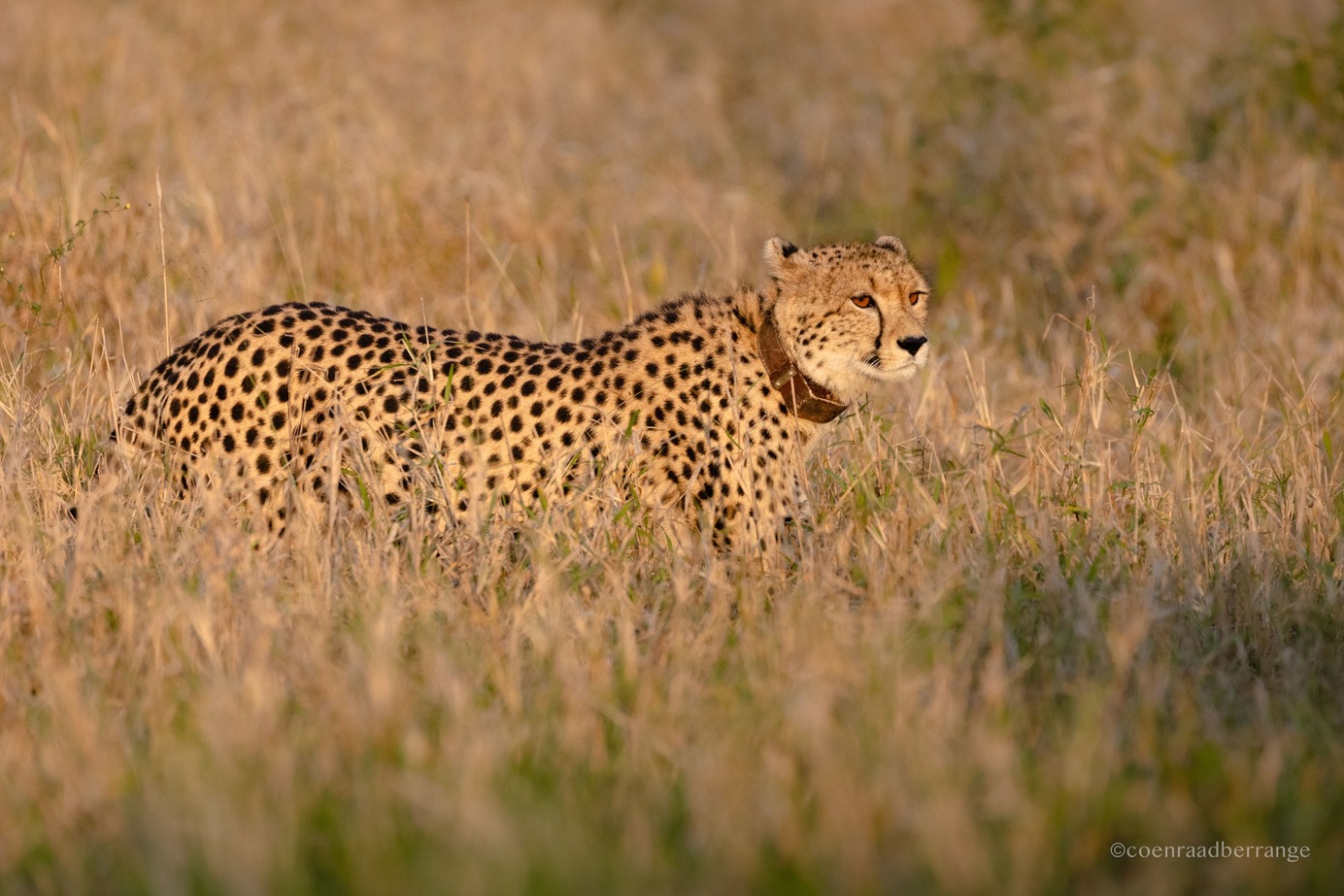
Habitat loss and fragmentation, human-wildlife conflict and persecution, competition and predation from larger carnivores, poaching and illegal trade, low genetic diversity.
Scientific name:Acinonyx jubatus
Common name: Cheetah
Conservation status: Vulnerable (IUCN Red List)
Estimated population: Approximately 7,000 adults globally; fewer than 1,300 in South Africa
Population trend: Decreasing globally
Range: Scattered populations across sub-Saharan Africa, with key strongholds in Southern and Eastern Africa
Habitat: Prefers open plains and grasslands, but can adapt to mixed savannah, woodland, and thicket habitats
Diet: Predominantly medium-sized antelope such as Impala; also hunts smaller mammals and ground birds
Average lifespan: Around 10–12 years in the wild
Social structure: Solitary females; males often form small coalitions, usually of related brothers
Notable traits: The world’s fastest land mammal, capable of reaching 100–120 km/h over short bursts; uses its long tail for balance and steering during high-speed pursuits. The species name Acinonyx jubatus means “immobile claws,” referring to the Cheetah’s semi-retractable claws that remain partially extended to provide traction while running.
Cheetah are part of the felidae family and can be found throughout Africa in open plains and grasslands or other terrains that allow them to run unhindered. They are characteristically identified by the black tear marks along their faces and their slight frame. Even though Cheetah are considered one of the larger predators, they are quite significantly smaller than other feline predators such as the Lion or Leopard – only measuring between 80 to 90cm at the shoulder and weighing between 30 and 60 kilograms.
Hyeana, Lion and Leopard pose the biggest danger to Cheetahs, adults and cubs alike. Cheetah have disappeared from more than 75% of their historic range in Africa and their population has decreased by over 30% in the last 20 years. Fewer than 7000 adults remain in the wild, with approximately 1000 of these found in South Africa.
Wildlife ACT provides daily monitoring of collared and uncollared Cheetahs across key protected areas. Using telemetry, direct observation, and camera traps, field teams record movements, reproduction, and interspecies interactions. This real-time data supports adaptive management decisions by conservation authorities.
Wildlife ACT supports the relocation and post-release monitoring of Cheetahs as part of population recovery and genetic management strategies. These translocations are coordinated through the Cheetah Advisory Group and carried out in collaboration with partners including Ezemvelo KZN Wildlife, the Endangered Wildlife Trust, and participating protected areas.
The organisation deploys GPS collars with anti-snare features to improve tracking accuracy and animal safety. These devices provide essential data on habitat use, dispersal, and survival rates.
Wildlife ACT’s Cheetah monitoring contributes to national and provincial management frameworks that maintain a healthy, interconnected Cheetah population across South Africa. The organisation shares data and field intelligence with partners to inform long-term conservation planning.
Global Cheetah populations continue to decline due to habitat loss, fragmentation, and human pressures. In South Africa, fewer than 1,300 individuals remain, distributed mainly across fenced protected areas managed as a connected metapopulation.
Wildlife ACT plays an active role in this system through participation in the Cheetah Advisory Group, which coordinates the management and translocation of individuals between protected areas to maintain genetic diversity and population stability.
Within KwaZulu-Natal, Wildlife ACT monitors Cheetahs in protected areas such as Hluhluwe-iMfolozi Park, uMkhuze Section of iSimangaliso Wetland Park, and Manyoni Private Game Reserve. These areas form part of critical ecological corridors that contribute to the long-term viability of the species within the province.
The Cheetah is one of Africa’s most iconic yet threatened carnivores. Once widespread across the continent, it now occupies less than 10 percent of its historical range and is classified as Vulnerable by the IUCN. Around 7,000 adults remain globally, with the largest remaining populations in Southern Africa.
In South Africa, Cheetahs are primarily found within fenced protected areas, managed through coordinated conservation frameworks to maintain viable and genetically diverse populations. As a flagship species for open savannah systems, the Cheetah plays a vital ecological role in controlling herbivore populations and maintaining ecosystem balance.
Wildlife ACT contributes to this national effort through field-based monitoring, collaring support, and collaborative management that strengthens population resilience and informs long-term recovery plans.